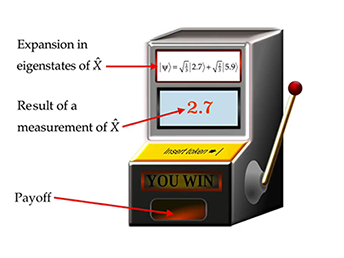

There needs to be fundamental assumptions to form the basis of abstractions, but you can simultaneously create a system with other fundamental assumptions, abstract through that system, and then integrate both views, though it may be impossible to do so systematically. Of course we have to ignore some things to make any meaningful statements, but I personally think a complementary system should always be taken which takes the opposite assumption and ignores something else instead. That’s all fine and good as long as it is acknowledged as a heuristic and a limit to what we’re willing to take into account. This is claimed to be basically a restatement of Einstein’s principle of locality, which is considered necessary for treating systems as quasi-enclosed, which is in turn deemed necessary for formulating laws of physics. This helps elucidate my hesitation with the initial foundation. There exists a mode of description such that the state of the combined system S1 ⊕S2 of any two substrates S1 and S2 is the ordered pair (x,y) of the states x of S1 and y of S2, and any construction undergone by S1 and not S2 can change only x and not y. However I can imagine a starting point that is so flexible while having the potential descriptive power constructor theory is claimed to have.ĭeparting from there, comes the second principle: This seems like it will run into problems with conflating substrate and attribute. So a substrate has “attributes” which are modified by the constructor. The basic idea behind this theory is that physical events are transformations of substrates by constructors. It mirrors closely with some things which Terrence Deacon (and possibly those he plagiarzied: Thompson and Juarrero–I have yet to read the source material) calls for dealing with counterfactuals as “constrained degrees of freedom,” and creating models which allow for them to have consequences. These include the theories of information, knowledge, thermodynamics, life, and of course the universal constructor. By regarding counter-factuals (‘X is possible’ or ‘X is impossible’) as first-class, exact statements, constructor theory brings all sorts of interesting fields, currently regarded as inherently approximative, potentially into fundamental physics. This is a new mode of explanation, intended to supersede the prevailing conception of fundamental physics which seeks to explain the world in terms of its state (describing everything that is there) and laws of motion (describing how the everything changes with time). classes of physical transformations) are possible and which are impossible, and why. It describes itself like this: The basic principle of constructor theory is that all fundamental laws of nature are expressible entirely in terms of statements of which tasks (i.e. I was just introduced to “ Constructor Theory” today., which is an attempt at reformulating the laws of physics only by describing what is possible and what is impossible.


 0 kommentar(er)
0 kommentar(er)
